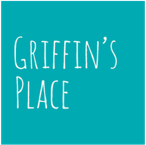Does the individual you support:
• Struggle with transitioning from one activity/place to another?
• Have limited activity interests?
• Demonstrate limited independence because of reliance on cueing/assistance from others?
• Rely on a ridged ‘internal’ routine?
• Exhibit characteristics of anxiety or obsessive compulsiveness around activities of the day?
If you answered YES to any of the above questions, a simple, low tech, visual Daily Schedule may be very beneficial.
Materials
• Daily Schedule Board
• Transition Cards: Cue cards
• Transition Card Pocket
• Velcro®
• Symbols to represent a variety of activities
Read more about how to choose the correct Symbols for the individual you support here.
A Daily Schedule Board displays an array of symbols in a specific order. It allows an individual to see the day’s activities in sequence rather than to experience them as a random, unpredictable, unrelated series of events. By gaining an understanding of the relationship between activities, e.g. first ‘x’ will happen, then ‘y’ will happen, life becomes more predictable. A Daily Schedule Board visually represents the sequence of events that will occur in a person’s day. It can be set up to show the next hour, a portion of the day or a whole day, whatever you know you can predict.
A Daily Schedule Board can be introduced as soon as the meaning of a few symbols has been learned. A Daily Schedule Board reflects a pre-determined sequence of activities; it is a schedule to be followed in a specific order. Symbols representing a partial- or full-day schedule are placed on the Daily Schedule Board by a parent, teacher, care provider /staff in order from left to right.
Initially, start with a short sequence of time that includes several preferred activities. Place the symbols representing these activities on the Daily Schedule Board starting at the far left and moving (as if time is passing) towards the right (schedules can also be set up vertically, moving top to bottom). Leave only enough room between each symbol so that it is visually distinct and the symbols easy to remove. Implement the Transition Card to prompt an individual to check his Daily Schedule.
In this example, ‘JJ’ has already learned the meaning of the symbols representing ‘eat,’ ‘bath’ and ‘music.’ You ‘schedule’ these activities by placing the representative symbols on the Daily Schedule Board in the actual order that you want them to occur (e.g., Eat, Bath, Music). You show the Daily Schedule Board to JJ saying, “Look, JJ, first eat, then bath, then music.” Hand JJ a Transition Card, have him place it in the Transition Card Pocket and then remove the first item on the left from the Board and go to the activity location, in this case the dining room table to eat. Once JJ is finished eating, hand him a Transition Card to prompt him to “check your schedule”. Through frequent repetitions and pairings of the phrase “first ____, then____,” JJ will soon grasp the concept of sequence. Using the ‘Transition Card’ to facilitate JJ to check his schedule will further support him in his transition into and out of other activities.
Initially, make sure that the last activity in a series is a favorite one; you want to end on a positive note, so that JJ is motivated to return to the Daily Schedule Board.
The Daily Scheduled Board provides you a way of offering new activities and increasing your learner’s ability to transition to and from activities more successfully and more independently. Using a Choice Symbol you can also show when ‘choices times’ will occur, a great motivator and an ideal way to develop sensory regulation and leisure skills.
Possible Outcomes of a successful Daily Schedule
• Offers activity sequence, First ____, then _____.
• Answers: What activity? Where? With Who? (by routines established with symbol) and What’s next?
• Decreases Anxiety
• Increases ease with transitions
• Decreases difficulty with new activities or new care providers
• Decreases required cueing/assistance to complete tasks or transition to/from activities.
• Increases self-regulation behaviors
• Decreased reliance on ‘internal’ routine
• Supports increased activities.
• Increases independences in transitioning and completing tasks.
www.BrittenyAsherConsulting.com/products is a great resource for information as well as Daily Schedule Boards, Communication Boards, Choice Board, Community Boards and a great Eye-Gaze Board for individuals learning to use their eyes to communicate.


